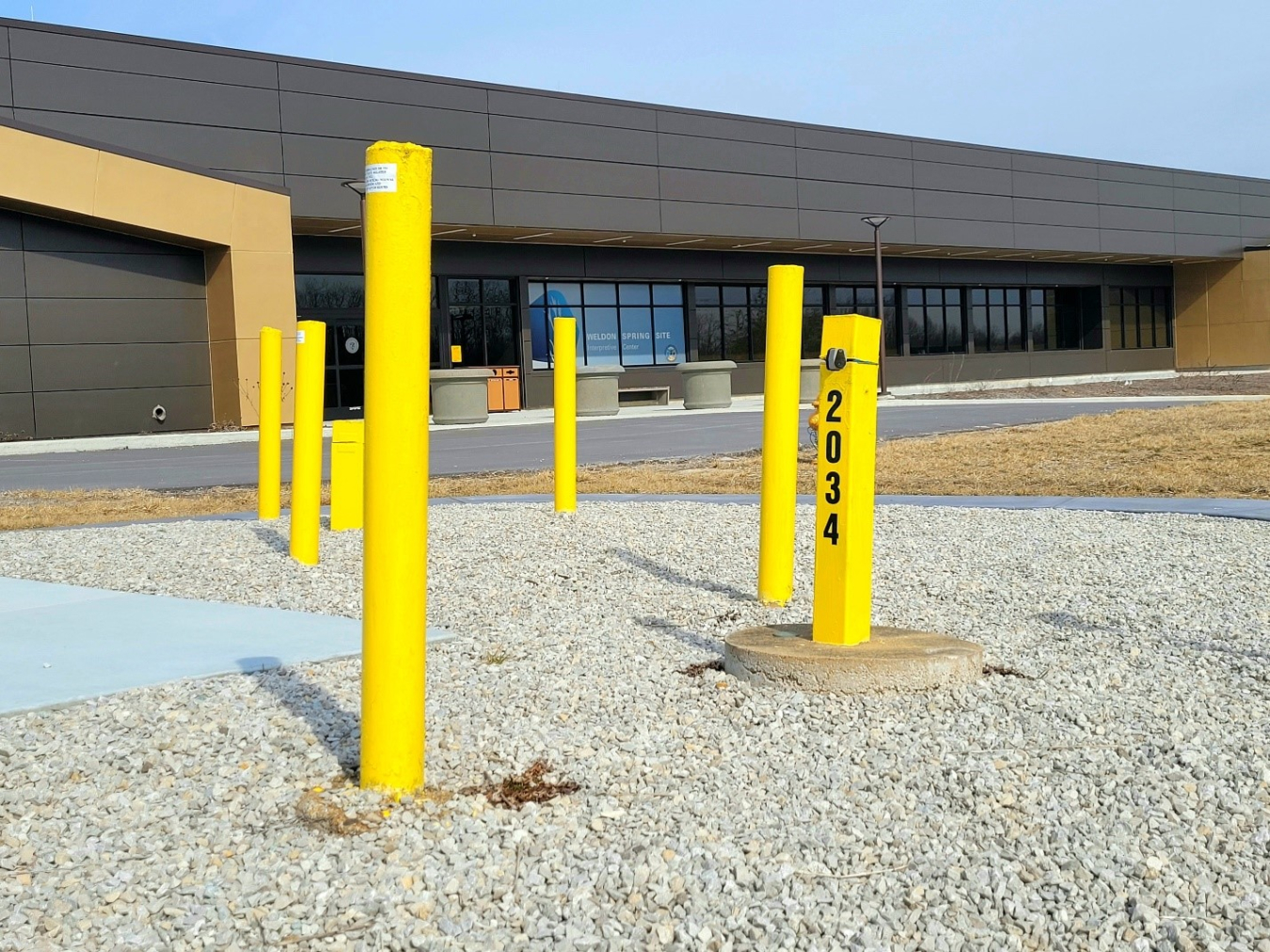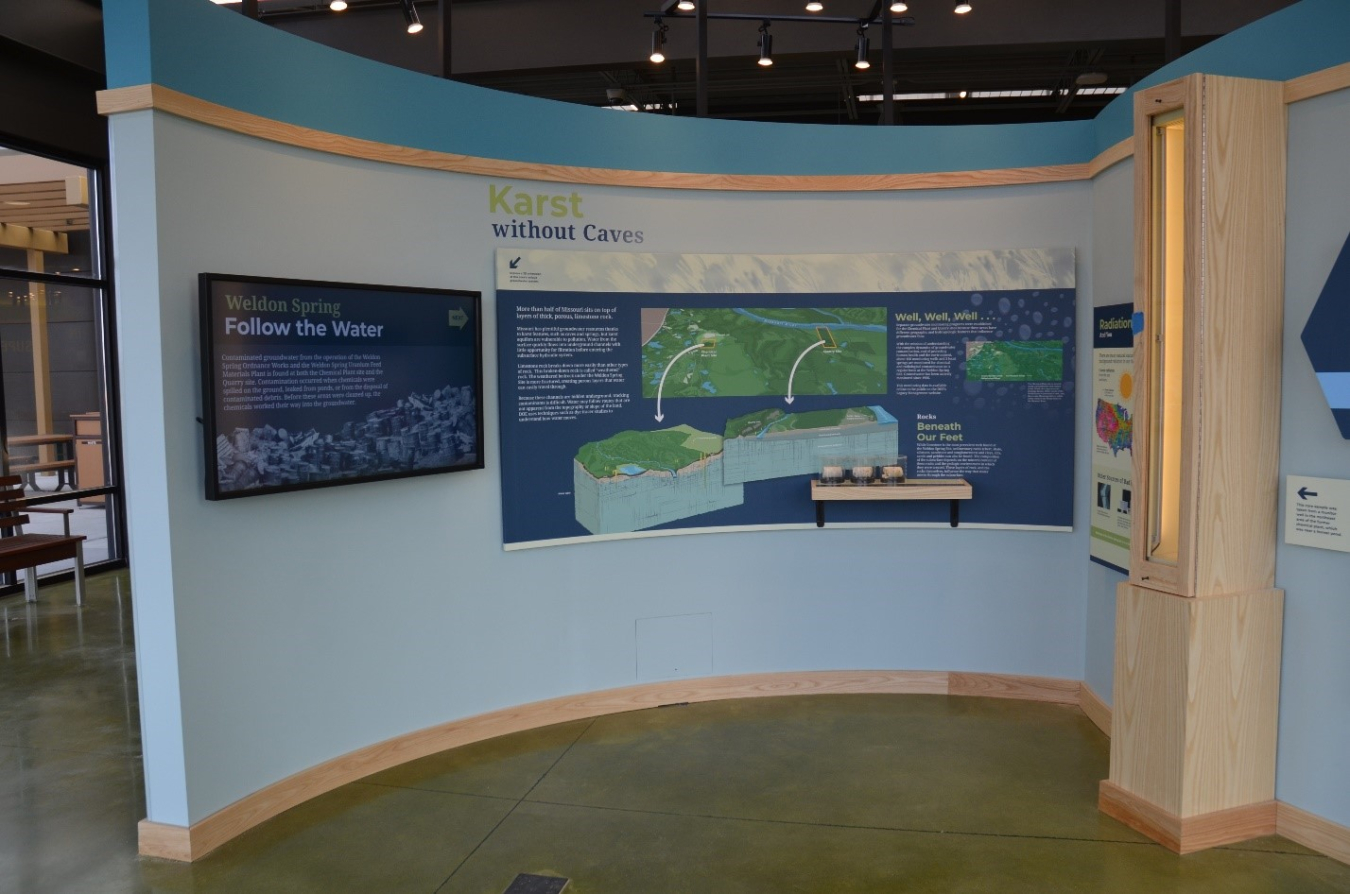The theme of this year’s World Water Day is highlighting groundwater, and the timing couldn’t be more perfect.
March 22, 2022To many, the term “freshwater” elicits images of rushing streams or wide-open glacial lakes. However, many of Earth’s freshwater needs are met by a resource that’s not as majestic or even visible at all. But as the theme of 2022 World Water Day, groundwater is getting a long overdue spotlight.
On March 22, the United Nations World Water Day is calling attention to the underground resource, guided by the theme of “Groundwater: Making the Invisible Visible.”
This theme holds a unique significance at the U.S. Department of Energy (DOE) Office of Legacy Management’s (LM) Weldon Spring Site, and it coincides with the opening of the site’s new Interpretive Center in April. The facility is a resource for information about site history, cleanup activities, and current conditions, as well as a venue for educational community events.

Right in front of the Weldon Spring Interpretive Center, visitors can check out the background monitoring wells that make groundwater sampling possible at the site.
The Weldon Spring Interpretive Center will open its doors April 15 and invite audiences to check out new content and exhibits, some of which highlight groundwater efforts at the site. Groundwater sampling is one important aspect of environmental stewardship at the site, which provided critical support to the U.S. government’s munitions efforts during World War II and the Cold War.
“The story of Weldon Spring can’t be told without groundwater,” said Kate Whysner, LM site manager. “The government is responsible for continuously monitoring contamination associated with the site’s nuclear history, and groundwater is a big part of that.”
On-site teams aim to get a full picture of how groundwater interacts with the subsurface by collecting water samples. Samples are collected and analyzed as frequently as four times a year to determine if the concentration of contaminants, such as trichloroethene or uranium, is increasing, decreasing, or stable. In addition to monitoring contamination, teams also monitor the elevation and depth of groundwater to evaluate how it moves through the subsurface over time.
“Groundwater remediation is notoriously one of the most difficult, long-term parts of environmental remediation,” Whysner said. She explained that the pace of the process depends on not only the hydrogeology of the subsurface, but also rock and soil characteristics and how the contamination made its way into the environment.
After groundwater samples are analyzed, data is validated, studied, and tracked by LM personnel. The results are made public on the DOE website and outlined in reports that are published on the LM website.
“Beyond monitoring groundwater, LM has a responsibility to educate the public about its efforts,” said Rebecca Roberts, LM site manager. “The organization’s educational programs and resources provide helpful context and make sense of groundwater analyses and other environmental data.”

The Weldon Spring Interpretive Center will feature brand new exhibits on groundwater monitoring at the site.
A new audio-visual component at the Weldon Spring Interpretive Center will tell interactive stories about the sampling program, featuring some of the same visuals that LM groundwater scientists use to inform their reporting. Additionally, an outdoor exhibit will satisfy many visitors’ curiosity about the purpose of more than 100 mysterious, yellow structures scattered around the site. The exhibit will feature one of these structures, a background groundwater monitoring well, used for the site’s monitoring program, allowing visitors to walk right up and witness firsthand how it works.
One goal of providing information about groundwater monitoring at the Weldon Spring Site is to ensure communities feel safe and confident in LM’s role as a long-term steward of the environment, according to Whysner. “Sometimes, people can be afraid of what they can’t see,” she said. “World Water Day’s theme, ‘Making the Invisible Visible,’ is exactly what LM does here, empowering the Weldon Spring community through education and transparency.”

